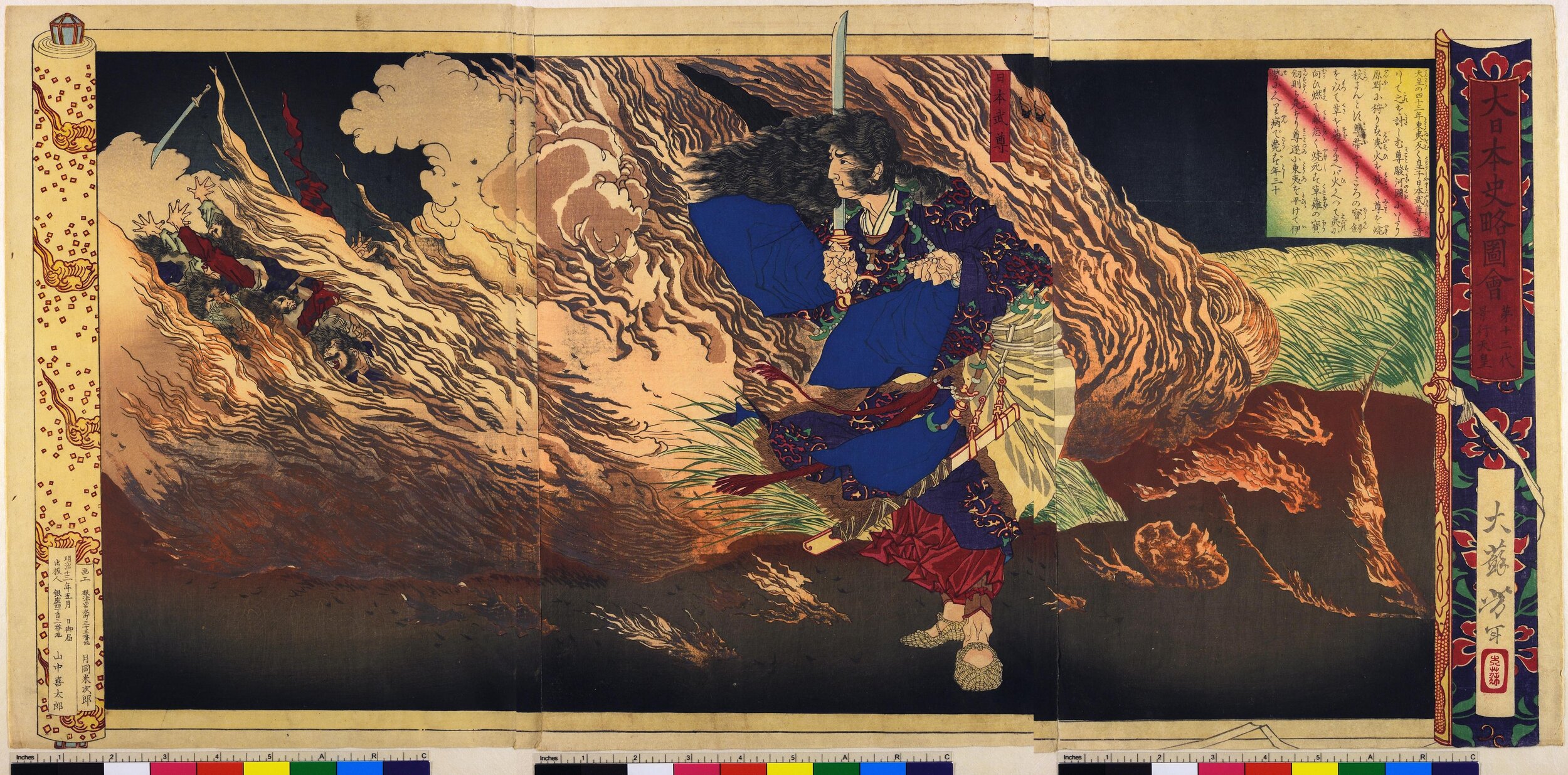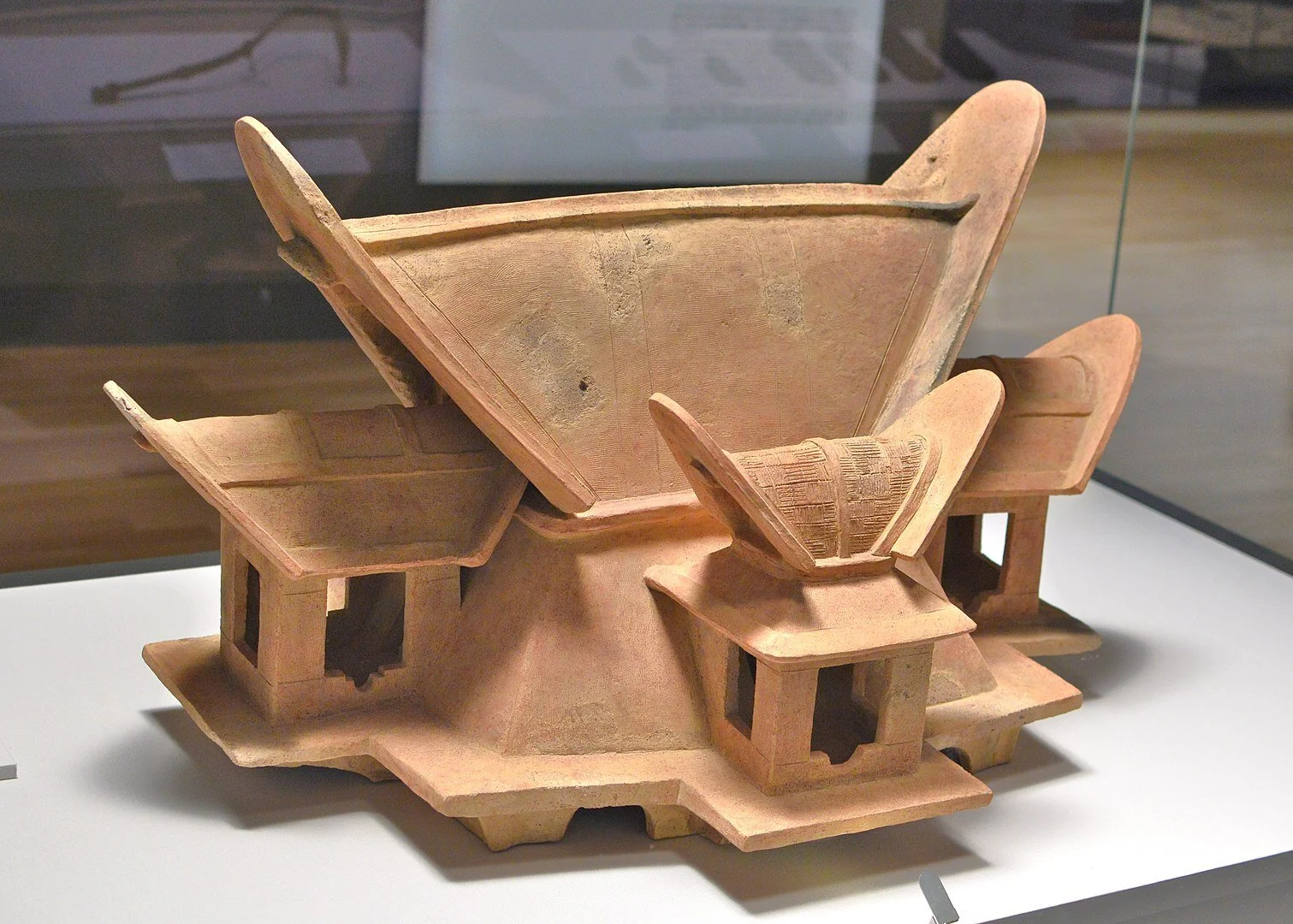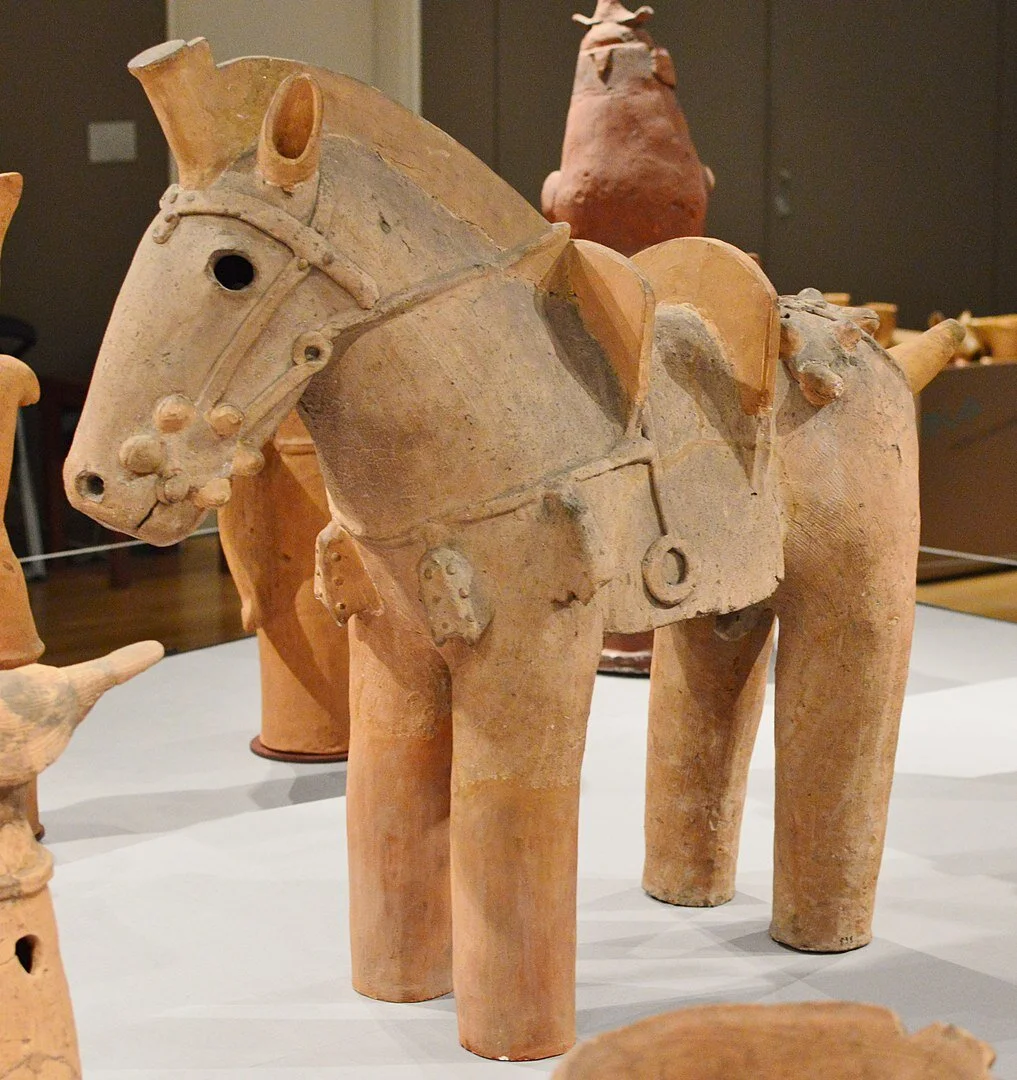A Journey Through History: Kofun Period, an Era Defined by Burial Mounds
8 minutes read
Our journey through history slowly makes its first steps into recorded History - or at least a history for which we have something close to records, and the study of which is not solely based on interpretations of archaeological findings and suppositions. The evolution of the Yamato kingdom, which would later spawn what would become the political centre of Honshū island, is easier to trace then the happenings of the earlier Yayoi period.
Tsukioka Yoshitoshi (1839 - 1892), Yamato-Takeru-no-mikoto from the series: Concise Illustrated History of Imperial Japan (Dai Nihon shi ryaku zue 大日本史略図会). © The Trustees of the British Museum
The Emergence of a Powerful Kingdom: Yamato
In many ways, the emergence of the Yamato kingdom and the political and technological transformations of 3rd century Japan have some connections to continental happenings. The disruption of the powerful Han empire, and the consequent troubled period, caused important migration flows which might even have reached the borders of the Japanese Archipelago to a certain extent. Such cultural exchanges were conducted predominantly through the Korean peninsula with migration, commercial exchanges as well as some supposed military conflicts. The main source of information of this early period is deeply related to particular burials mounds called Kofun 古墳 and the artifacts discovered in their surroundings, such as the Haniwa clay statues. Similarities in symbology, crafting patterns as well as architectonic techniques between Japanese, Korean and Chinese mounds further suggest the cultural porosity of the time.
Haniwa clay statue of a house, excavated in Miyazaki prefecture, Tokyo National Museum.
Burial Habits Defining a Whole Period
The most notable characteristic of the Yamato civilisation lays within its burial custom. Important people within the community, predominantly rulers, were buried in great burial mounds which can be found from southern Kyūshū to the Kantō plain. This is a clear sign of the Yamato people’s cultural and diplomatic influence on the many other kingdoms at the time. These mounds are so characteristic that the gap between Yayoi period and the edification of the first Chinese-inspired Japanese capitals is often defined as the Kofun period (kofun jidai 古墳時代, 4th century to 538 AC). Among the most widely known burial mounds are the Shiba Maruyama Kofun, located nearby the Tokyo Tower in the heart of the capital, and the Daisenryō Kofun in Sakai, which is the largest of all burial mounds and whose image is thus often broadcasted when presenting this topic. However, Kofun can actually be found more often than one might think. An odd, key-hole shaped hill in a neighbourhood might in fact be a Kofun, where school kids play oblivious of the hill’s historical relevance.
Daisen-kofun in Sakai, Osaka, Japan. Supposedly the tomb of the 16th emperor of Japan, Nintoku. © National Land Image Information (Color Aerial Photographs) Ministry of Land, Infrastructure, Transport and Tourism.
Kofun have been the subject of some controversies in recent times, as post-war academics have been revaluating the generally accepted historical narrative by pointing to hypothetical stronger influences from the continent during these ancient times. The controversy surrounding the mythical Shaman-Queen Himiko is only but one occurrence of such academic frenzy. It is probably historian Egami Namio’s hypothesis which hints to the strongest continental influence in the form of a direct colonization of Japan by Korean populations. Namio’s thesis was elaborated upon archaeological findings and by cross-referencing many mythological features that, according to the historian, suggest a foreign invasion of a tribe of horse-riders who subjugated local populations in the Japanese islands. Whether these theories are more plausible than others is not for us to say. Nonetheless, it seems that the continent might have played a more important role in the evolution of Japanese population towards building their capitals than previously assumed.
Haniwa clay statue of a horse excavated in Saitama prefecture, Tokyo National Museum.
This debate is still a rather active one, where academic factions frequently clash with each other. Some answers might be provided by the archaeological study of Kofun across Japan. However, since these burials are considered the resting places of ancestors of the imperial family, invasive studies have been prohibited to preserve the sacrality of those locations. Despite this prohibition, multidisciplinary studies of the period, mixing archaeological observations with ethnological and philological analysis of both national and local myths, led the academic community to shape the Yamato evolution into three phases: an initial flourishing period in the emergent kingdom, the subsequent consolidation of political power and expansion, and a later military setback, despite the adoption of writing and administrative techniques that eventually translated to the emergence of the first Japanese capitals.
Shinto shrine and mausoleum honoring Emperor Ōjin (201 - 310), first emperor recognized as a ‘probably real’ historical figure. Konda Gobyoyama Kofun, Osaka prefecture. © Saigen Jiro
Tracing Yamato evolution through its burials
Kofun mounds suggest the presence of a strong political entity in the locations where they can be found. One must consider that building such impressive constructions was not an easy feat, and erecting them most likely required intense labour, either through the services of fellow villagers or even resorting to slaves. Both solutions are testimonials of the socio-political might of the person whom the mounds were built for. The high density of Kofun burial mounds in the Nara region also suggests a progressive centralisation of political power, and it is mainly in this regard that scholars have associated the rising of the Yamato kingdom to the region. This kingdom was mentioned in Chinese historical sources as well as in the first historico-mythological records compiled in Japan in the 7th century (Kojiki and Nihon-shoki). Scholars have situated the emergence of the Yamato kingdom between the 3rd and 4th century AC in reference to a sequence of impressive burials concentrated in nowadays Nara prefecture: the Hashihaka in the city of Sakurai; the Nishitonozuka in the city of Tenri; the Tobi Chausu-yama of Sakurai; the Mesuri-yama of Sakurai; the Ando-yama in Tenri, and the Shibutani Muko-yama.[i] All six mounds were built in the vicinity of Mount Miwa, a place often mentioned by Japanese myths and legends, thus confirming that the region had important political and religious relevance. We could also argue that both aspects - political power and religious influence - were heavily intertwined at the time. Chieftains likely held some religious influence, while people with spiritual abilities likely held some kind of political power.
Mount Miwa, Sakurai in Nara Prefecture. © A photographer
This connection between a strong political entity and Mount Miwa led scholars to consider the inherited Japanese myths with a new perspective. To what extent do these old tales, narrated by cantors in the 7th century, bear historical chronicles embedded in their fables?
One thing we can infer from such stories is the emergence of a powerful Yamato kingdom and its progressive expansion both in the Japanese archipelago and in the continent, as we will see in the upcoming articles.
__________________________________________________________________
[i] Delmer M.Brown. 1993. The Cambridge History of Japan, Vol.1: Ancient Japan. Cambridge University Press, p.113.
Written by Marty Borsotti






